ANUARIO 2020 - PRE - YEARBOOK 2020 / A partir del 20 de Diciembre de 2020 / Since December 20.
 |
 |
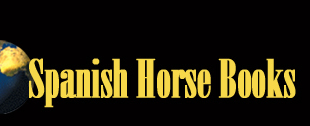 |
 |
||||||
 |
 |
 |
 |
 |
|||||
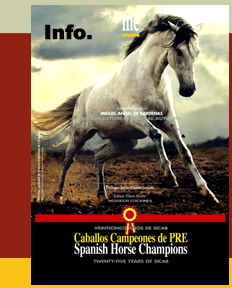 |
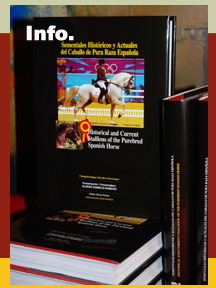 |
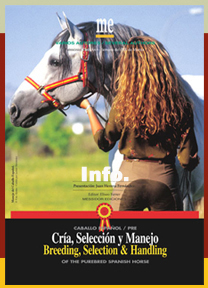 |
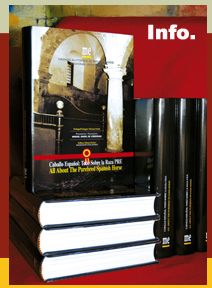 |
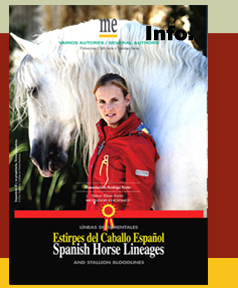 |
|||||
 |
 |
 |
 |
 |
|||||
 |
 |
 |
|||||||
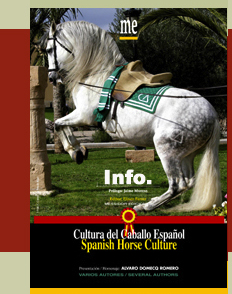 |
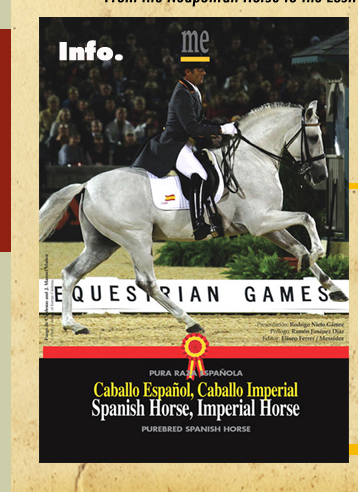 |
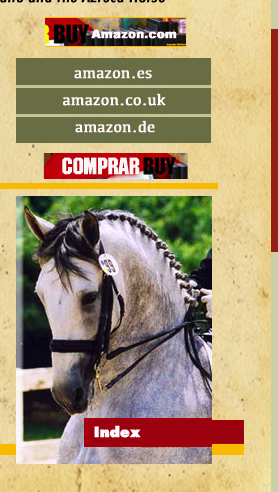 |
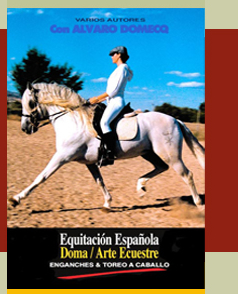 |
||||||
 |
 |
||||||||
_______________________________________________________________
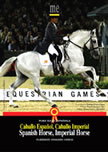
CABALLO
ESPAÑOL, CABALLO IMPERIAL
En primer lugar, se trata de un libro de historia asequible para todo
el mundo, puesto que sitúa la Creación del Caballo de PRE en
el Imperio de Carlos V (Carlos I de España) y la Monarquía de
Felipe II. Pero se trata también de un libro sobre el Arte Ecuestre
y la doma de Alta Escuela, que fueron los elementos en los que surgió
el Caballo Español. Y ¡muy importante también!... Casi
la mitad de este libro de más de 500 páginas está orientado
hacia un contenido inédito, que nos da cuenta de todas las razas europeas
y americanas creadas sobre la genética del caballo (imperial) de PRE
o de los caballos andaluces y extremeños de los que nació, que
fueron llevados a América.
Detallo, por orden alfabético, según se especifica en el índice:
Caballo Azteca (México), Caballo Cartujano (España), Caballo
Criollo Argentino (Argentina), Caballo Criollo Colombiano (Colombia y Venezuela),
Caballo Frisón (Holanda), Caballo Hispanoárabe (España
- Europa), Caballo Lipizzano (Austria - Eslovenia), Caballo Mustang (USA),
Caballo Napolitano (Italia), Caballo de Paso Peruano (Perú - Ecuador)
y Purasangre Lusitano (Portugal).
Finalmente, el libro dedica dos capítulos a aclarar denominaciones
tales como: «Caballo Andaluz» y «Caballo Ibérico».
Y concluye con un apéndice donde se recogen dos antiguos artículos
de JC Altamirano q.e.p.d de los años 2000 y 2001: «El Caballo
de los Conquistadores» y «Las primeras exportaciones de Caballos
Españoles».
Voy a dejarles a ustedes que disfruten de un libro cuyos conocimientos no
se encuentran en Internet ni en otros libros similares. Por mi parte, solo
transmitir a los lectores que nuestro caballo surgió desde lo alto
de un imperio «en el que no se ponía el sol» y que dominó
el mundo a través de sus mares y sus océanos.
Presentation: Rodrigo Nieto / Yerguada Nieto & Ramón Jiménez
Díaz / La Ciervina - Several Authors
SPANISH HORSE. IMPERIAL HORSE
In the first place, it is a book of history affordable for all everyone,
since it places the PRE Horse Creation in the Empire of Charles V (Charles
I of Spain) and the Spanish Monarchy of Philip II. But it is also a book about
Equestrian Art and dressage of the Spanish Riding High School, that were the
cultural elements in which the Spanish Horse emerged. And also very important!
... Almost half of this work of more than 500 pages is oriented towards the
content of a book never written as of today and that tells us about all the
European and American breeds created on the genetics of the (imperial) horse
of PRE or the Andalusian and Extremaduran horses from which he was born, that
were taken to America.
I detail, in alphabetical order, as specified in the index: Azteca Horse (Mexico),
Cartujano Horse (Spain), Argentine Creole Horse (Argentina), Colombian Creole
Horse (Colombia and Venezuela), Friesian Horse (Holland), Hispano-Arab Horse
( Spain - Europe), Lippizaner Horse (Austria - Slovenia), Mustang Horse (USA),
Neapolitan Horse (Italy), Peruvian Paso Horse (Peru - Ecuador) and Lusitano
Purebred (Portugal).
Finally, the book devotes two chapters to clarify concepts such as «Andalusian
Horse» and «Iberian Horse». And it concludes with
an appendix where two old articles of JC Altamirano R.I.P of 2000 and 2001
are collected: «The Horse of the Conquerors»
and «The first exports of Spanish Horses».
I am going to let you enjoy a book which knowledge is neither found on the
Internet nor in other similar books. From me, only to convey to readers that
our horse emerged from the top of an empire «on which the sun did not
set» and that dominated the world through its seas and oceans.
_____________________
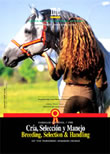
CRÍA.
SELECCIÓN Y MANEJO DEL CABALLO ESPAÑOL
Con la publicación del sexto libro de la colección ("Cultura
del Caballo Español / Panorama del Caballo de Reyes"), esta serie
bibliográfica entra en el terreno práctico después de
haber recorrido, casi más bien agotado, las connotaciones culturales,
históricas y sociales del Caballo de Pura Raza Española. Una
vez sentado y pormenorizado en las publicaciones anteriores, cómo se
ha llegado hasta hoy, el libro plantea cómo va a seguir en el futuro
el Caballo de Pura Raza Española y qué supone la refundación
de la raza llevada a cabo a partir del Real Decreto de 2002. Y es así,
que recorre el ciclo completo del caballo a través de las tres etapas,
Cría, Selección y Manejo, necesarias para obtener productos
excelentes, que contribuyan a la expansión del conocimiento
y reconocimiento de esta raza en el mundo global.
El libro tiene la virtud de reunir a los autores que hoy representan la vanguardia
tecnológica y profesional del caballo en España, entiéndase
en sentido amplio, expertos y especialistas de lo que debe ser la Cría,
Selección y Manejo del Caballo Español. Y va destinado a rendir
un gran servicio a la gran familia de criadores del futuro. Todos ellos han
demostrado sus conocimientos, que ahora comparten con los lectores de esta
publicación.
Presentation: Juan Herrera / Yeguada Juan Clavero - Several Authors
BREEDING, SELECTION & HANDLING
OF THE PUREBRED SPANISH HORSE
With the publication of the sixth book of this collection, Culture of
the Spanish Horse / The Kings’ Horse Panorama, the bibliographic series
enters into the practical field after having traveled, or better yet exhausted,
the cultural, historical and social connotations of the Purebred Spanish Horse.
Once settled and detailed in the previous publications, how it has been reached
until today, this book demonstrates how it will continue in the future and
what the new breed foundation carried out from the Royal Decree of 2002 supposes.Thus,
it goes through the complete cycle of the horse in the three stages necessary
to obtain excellent products that contribute to the expansion of knowledge
and recognition of this breed across the global world – breeding, selection
and handling.
This book has the virtue of bringing together the authors who today represent
the technological and professional vanguard of the horse in Spain, understood
in a broader sense, experts and specialists of what should constitute the
Breeding, Selection and Handling of the Spanish horse. And it is destined
to render a great service to the great family of breeders of the future. All
of them have demonstrated their knowledge, which they now share with the readers
of this publication.
_____________________
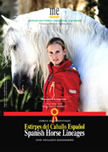
ESTIRPES DEL CABALLO ESPAÑOL
Y Líneas de Sementales
Este libro (ESTIRPES DEL CABALLO ESPAÑOL y Líneas de Sementales)
no existía y alguien tenía que escribirlo. Alguien tenía
que embarcarse en una larga investigación para presentarnos los resultados
en quinientas páginas. El libro toma como referencia dos estirpes básicas,
que son la Estirpe Cartujana y la Yeguada Militar. Y luego nos presenta detalladamente
las líneas andaluzas (14) y extremeñas (7) desde el siglo
diecinueve hasta los años sesenta del siglo veinte (veintiuna en total),
y que son todas descendientes de una o de las dos estirpes consideradas como
fundamentales y básicas. Después de tan densa aportación,
el libro termina con unas interesantes consideraciones sobre el papel de la
Casa Real Española en la creación de nuestro caballo y en su
mantenimiento a través de varios siglos. Está de más
decir que se trata de un libro fundamental para quien quiera conocer a fondo
el caballo de Pura Raza Española, y muy importante para los ganaderos
que deseen ver ilustrados con datos históricos los árboles genealógicos
de sus caballos.
Presentation: Rodrigo Nieto / Yeguada Nieto - Several Authors
SPANISH HORSE LINEAGES
And Stallion Bloodlines
This book (Spanish Horse Lineages and and Stallion Bloodlines) nothing like
it has existed and it needed to be written. Someone had to embark on a long
investigation to present us with the results in five hundred pages. The book
uses two basic lineages for reference, which are that of the Carthusians and
the Yeguada Militar. He meticulously presents these lines with the lines of
Andalucía (14) and Extremadura (7) dating back to the nineteenth century
and continuing into the sixties of the twentieth century (twenty-one in total),
all of which are descendants of one or both of these basic lines. After such
a dense contribution, the book ends with some interesting thoughts about the
role of the Royal Spanish House in the creation of our horse and its maintenance
across several centuries. It is important to say that this is a fundamental
book for anyone who wants to know the Purebred Spanish Horse, as well as highly
important to breeders who wish to see the genealogical trees of their horses
illustrated with historical data.
_____________________
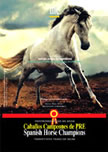
CABALLOS CAMPEONES DE PRE
25 años de Sicab
TODOS LOS CABALLOS CAMPEONES DE PRE DESDE 1991. Y más… Todos
los Campeonatos de Cría Caballar y los Campeonatos de España
de PRE de Pineda (Sevilla) y
la Casa de Campo (Madrid).
Javier Conde, antiguo presidente de ANCCE, ha escrito sobre este libro: “Para
mí ha sido una gran satisfacción prologar y preentar este nuevo
libro de Caballos Campeones de PRE, dedicado a los veinticinco años
de SICAB y a homenajear a un ganadero como Miguel Ángel de Cárdenas:
«El SICAB está vivo, pero no podemos dormirnos en los laureles.
Debemos cuidarlo, respetarlo y modernizarlo. Han sido 25 años de trabajo,
ilusión, preocupación, diversión, disgustos y alegrías,
en las que han participado empleados, ganaderos, presentadores, jinetes, jueces,
periodistas, autoridades, aficionados de dentro y fuera de España y
los directivos que lo pusieron en marcha, y, por supuesto, los que consiguen
que se inicie una nueva edición del Salón cada año. A
todos ellos, gracias, como antiguo responsable y hoy ganadero y aficionado,
y una petición de apoyo para algo que es nuestro y que se ha hecho
de todos, el SICAB.
Y felicitar, por último, a Messidor Ediciones por este magnífico
libro “Caballos Campeones de PRE”, que ha servido, además,
de muy merecido pedestal para una ilustre persona como es Don Miguel Ángel
Cárdenas y de un Certamen único como es el SICAB».
Presentation: Juvier Conde, Expresidente de ANCCE / Yeguada Rafael
Conde - Several Authors
SPANISH HORSE CHAMPIONS
Twenty-Five Years of SICAB
PRE HORSE is alive, but we cannot rest on our laurels, we must take care
of it, respect it and modernize it, and these are not mere words addressed
to those who organize or those involved in one way or another in SICAB. We
must take care of it by maintaining the good that it already has. It must
be respected, leaving aside personal interests, observing the rules made in
the strictest sense of justice and respecting the sacred principle of impartiality,
and avoiding controversies that lead nowhere and can only harm the Contest
and what revolves around PRE horses. We must modernize it, because all that
does not evolve wilts, and in this process the presence of different sports
should increasingly occupy a prominent place in the competition, showing that
our horse is not only beautiful, but also serves a purpose. They have been
25 years of work, enthusiasm, concern, fun, disappointments and joys, in which
employees, breeders, presenters, riders, judges, journalists, officials, fans
from inside and out of Spain have participated, as well as the officers that
put the wheels in motion and start a new edition of the Salon each year. To
all of them, thank you as the former head, and now as a breeder and a fan.
I ask for support in something that is ours and that everyone has helped to
build, SICAB. Congratulations to Pura Raza Editions on this magnificent book
Champion Horses that has also served as a well-deserved pedestal for an illustrious
person like Don Miguel Ángel Cárdenas and a unique event as
is SICAB. / JAVIER CONDE - Ex-president of ANCCE.
_____________________
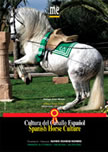
CULTURA DEL CABALLO ESPAÑOL
Tras la edición de tres espléndidos libros titulados "Sementales
Históricos y Actuales del caballo PRE", "Caballo Español:
Todo sobre la Raza PRE" y "Cultura del Caballo Español",
Messidor Ediciones nos ofrece este cuarto libro: "Equitación Española..."
He aquí que en los años noventa se produjo una auténtica
revolución en el mundo del Caballo de Pura Raza Española. Una
revolución a la que contribuyeron en gran medida la Real Escuela Andaluza
del Arte Ecuestre y su fundador y director, Álvaro Domecq Romero, sin
olvidar la labor siempre constante de Cría Caballar y de la Yeguada
Militar de Jerez. La constatación de que algo se movía en la
superficie y de que muchas cosas estaban cambiando en profundidad se produjo
en los Juegos Olímpicos de Atlanta (USA), en 1996, donde el caballo
Evento y el jinete de la Real Escuela Ignacio Rambla consiguieron una hazaña
que automáticamente se convirtió en bandera y referencia de
las posibilidades de la Raza PRE. Aquellas olimpiadas cambiaron la historia
y el rumbo del Caballo Español. / El libro se divide en varias secciones
básicas: -Homenaje a Álvaro Domecq Romero -Instituciones Históricas:
Reales Maestranzas de Caballería, Caballerizas Reales de Córdoba,
Yeguada Real de Aranjuez y Cría Caballar -Arte Ecuestre: Real Escuela
Andaluza del Arte Ecuestre y Escuela Española de Viena -La Alta Escuela
y el caballo de PRE -La Doma Clásica y el caballo de PRE -La Doma Vaquera
-Enganches de Competición -Enganches de Tradición -Toreo a Caballo
-Y Ganaderías Masters Españolas en Caballo Funcional.
Presentation: Jaime Moreno / Centro Los Arcos - Several Authors
SPANISH HORSE CULTURE
After the release of two splendid books entitled "Historical and
Current Stallions PRE Horse," and "The Spanish Horse: All About
the PRE Breed," Messidor Equestrian Editions, offers this third book:
"Spanish Horse Culture." Despite their majestic history, in the
late eighties and early nineties of the last century, the Spanish Horse only
represented a very small portion of Spanish equestrian culture. Converting
their myths and legends into history, closely linked to the western area of
Andalucía, and making Sevilla and Jerez their geographical landmarks;
at the same time when thier image (their manes and tails) had become their
truest value. This was because, beyond the morphological contests, few people
very, very few...practiced or knew the contents of the High School. They were,
to put it in words, a symbol of aesthetic expression and social distinction
that was paraded in fairs and pilgrimages, and whose usefulness barely went
further than what was a visual manifestation. However, behold, in the nineties
there was a revolution in the world of the Purebred Spanish Horse. A revolution
of which the Royal Andalucían School of Equestrian Art with its founder
and director, Álvaro Domecq Romero, greatly contributed, but without
forgetting the ever continuing efforts of Cría Caballar and the Yeguada
Militar of Jerez. The realization that something was in motion on the surface
and that many things were profoundly changing occurred at the Olympic Games
in Atlanta, USA, in 1996, where the horse Evento, and Escuela Real rider Ignacio
Rambla, achieved a feat that automatically became the flag and reference of
the possibilities of the breed. Those Olympics changed the history and course
of the Spanish Horse, discovering unexplored skills and deploying a range
of possibilities for the PRE horse that have finally opened the doors of what
we are now calling in this book, the Culture of the Spanish Horse.
_____________________
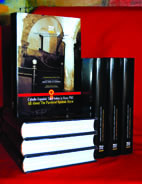
CABALLO ESPAÑOL: TODO SOBRE LA RAZA
PRE
TODO LO QUE NECESITAS SABER SOBRE EL CABALLO DE PRE en este libro de 602
páginas, en español e inglés. Se trata de un detallado
compendio de todo lo que concierne al Caballo Español y la Pura Raza
Española, PRE. Dentro de sus páginas se habla de los orígenes
históricos de la Raza, su refundación a principios del Siglo
XX, las Estirpes originales y las estirpes de la refundación. En el
plano técnico se abordan todos los aspectos del Libro Genealógico
/ Stud Book, así como sus reglamentos. Sin olvidar todo lo relativo
a los Planes de Mejora, Esquemas de Selección, y Concursos Morfológicos,
con todos sus reglamentos. Se aborda asimismo toda la legislación española
e internacional sobre el PRE y, al final, diez expertos, entre los que se
encuentran Alvaro Domecq y Angel Peralta, hablan del Caballo Español
y sus virtudes. Igualmente, se abordan en varios capítulos las aptitudes
deportivas de la raza, destacando como más sobresalientes, los capítulos
dedicados a los Movimentos y a la Doma Clásica. Este libro rinde ademàs
homenaje al historiador Juan Carlos Altamirano, a quien dedica una sección,
dentro de la cual se publican varios de sus artículos editados en los
últimos años en la Revista Pura Raza.
Presentation: Miriam Frenk / Amazona de Competición Internacional
- Several Authors
ALL ABOUT THE PUREBRED SPANISH HORSE
It was certainly a wise and welcome idea to gather and present so much
information about the Purebred Spanish Horse in one single book. Recently,
following the request of foreign clients, I was looking for answers to questions
they put forward about the Spanish horse - its origins, character,
conformation, movements, and even the differences between specimens from those
stud farms that have had most influence on the breed.
This resulted in hours of searching on the internet in order to find the the
required answers, and I realized that there exists a great lack of information
on the general aspects of the Spanish Pure Breed horse in general, although
there are indeed
some excellent books available on specialized subjects.
I am therefore very pleased to welcome this exceptional book
and I congratulate its editor on his timely initiative.
Finally, I would like to emphasize that whilst there is a tendency amongst
breeders to focus on producing a horse suitable for dressage competitions,
many foreign clients wish to purchase a true to type Spanish Horse with
authentic looks. Unfortunately, it is becoming increasingly difficult to find
a horse of great and expressive beauty, showing elevated movements, and above
all, with an unsurpassable temperament and great attitude to work.
This book with all its details about history and origins, will also
be extremely useful for both PRE breeders and amateur
horse lovers in Spain, whilst reminding them of the authentic
characteristics of the breed.
May all readers enjoy browsing through
and studying the contents of this great book!
_____________________
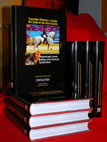
SEMENTALES HISTORICOS
Y ACTUALES DEL CABALLO DE PRE
Se trata de un libro único y sumamente útil para el mundo
del caballo de Pura Raza Española, que pretende convertirse en una
guía de referencia, un vademecum y canon de los sementales de la raza
española. Por lo menos esos son sus objetivos... Como reconoce su editor,
"se trata de un libro de carácter eminentemente profesional y
técnico, un libro serio, dirigido fundamentalmente a ganaderos y aficionados
de todo elmundo, pero también a veterinarios y genetistas, y donde
el lector encuentra, semental a semental, la verdadera historia de la cría
del caballo de Pura Raza Española desde los años cuarenta del
siglo pasado hasta el momento presente.
Revista Pura Raza
Presentation: Álvaro Domecq Romero y Salvador Zunzunegui -
Several Authors
HISTORICAL AND CURRENT STALLIONS
OF THE PUREBRED SPANISH HORSE
A unique book... It is, definitively, a unique book and highly useful
in the world of the Pure Spanish Horse that intends to become a reference
guide, a vademecum and canon of the stallions of the Spanish breed. These
are the objectives at least... As recognized by its coordinator and literary
editor, this book, fundamentally directed at breeders and fans throughout
the entire world; however, it is also a book for veterinarians and geneticists,
where the reader will find, stallion by stallion, the true history of the
Pure Spanish Horse from as early as the forties of the last century up to
present day.
Pura Raza Magazine.
_____________________
© Messidor 2019 - Madrid - Spain